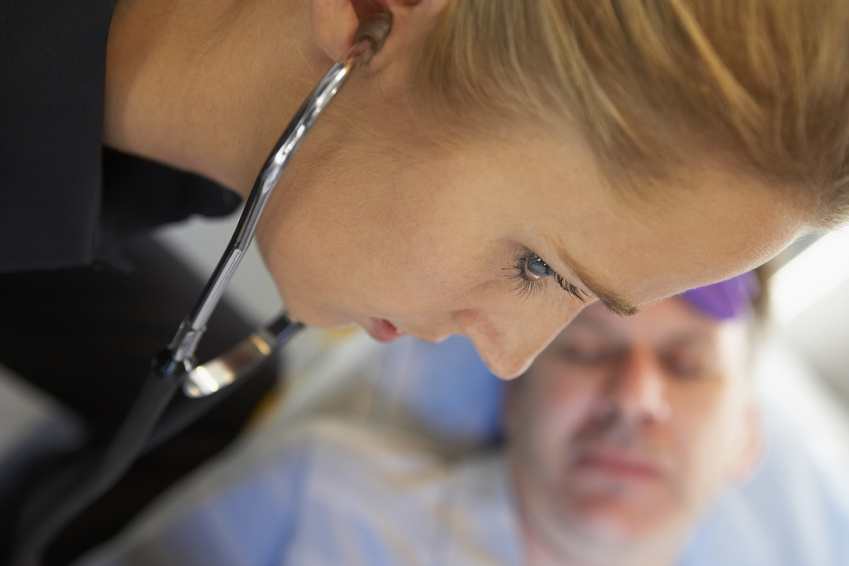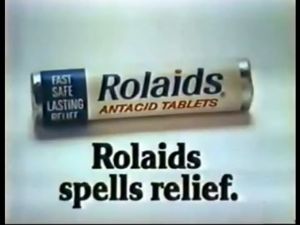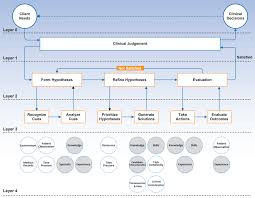
 If you are old enough to remember the early 1990s, there was a classic commercial you likely remember for Rolaids that asked the question, how do you spell relief?
If you are old enough to remember the early 1990s, there was a classic commercial you likely remember for Rolaids that asked the question, how do you spell relief?
R-O-L-A-I-D-S…Rolaids spells relief.
In the same way, if nurse educators are going to understand and teach clinical judgment, there is one model of clinical judgment that must be applied and understood.
It is Chris Tanner’s model of clinical judgment that was published in 2006 and titled: Thinking like a Nurse: A Research-Based Model of Clinical Judgment.
Chris synthesized the findings of almost 200 articles on clinical judgment and identified essential themes on how a nurse develops clinical judgment.
To better understand how to teach and develop the clinical judgment that your students require for safe practice and to pass the licensure examination, including the upcoming Generation NCLEX, Tanner’s model must be deeply understood and applied in your program.
How do I spell clinical judgment? T-A-N-N-E-R
Why Tanner’s Model Remains Relevant
The NCLEX licensure examination is about to get much more difficult as the NCSBN implements an evaluation model of clinical judgment for Next Generation NCLEX.
The diagram schematic of this model is complicated enough to give most educators a headache! (See below)
 But when you carefully review the third layer of this model, which is the most relevant for nurse educators, you will see Tanner’s model of clinical judgment and the four steps that she identified dovetail with all six steps of the NCSBN model and framework:
But when you carefully review the third layer of this model, which is the most relevant for nurse educators, you will see Tanner’s model of clinical judgment and the four steps that she identified dovetail with all six steps of the NCSBN model and framework:
- Recognize cues
- analyze cues
- Priortize hypotheses
- Generate solutions
- Take action
- Evaluate outcomes
Who is Chris Tanner?
As I travel across the country, most educators have not heard of or are faintly familiar with Chris Tanner’s model.
Chris was an innovative professor at the Oregon and Health Science University and  was the editor for the premier journal of nurse educators, Journal of Nursing Education for many years, and has since retired. She also collaborated on many articles with Dr. Pat Benner.
was the editor for the premier journal of nurse educators, Journal of Nursing Education for many years, and has since retired. She also collaborated on many articles with Dr. Pat Benner.
Assumptions of Clinical Judgment
Before I go into the four distinct reasoning steps that a nurse utilizes to make a correct clinical judgment, Tanner identified several assumptions of clinical judgment that every nurse educator must know.
Clinical judgment cannot be taught directly. Clinical judgment is an outcome or end result of the decision that is made by a nurse when they critically think by understanding essential content and apply it at the bedside, then use this knowledge by reasoning or thinking in action.
Despite clinical judgment being the current buzzword in nursing education with many products and resources being developed and promoted, the promises that may be made and how clinical judgment is learned must be filtered through Tanner’s model, not promotional materials.
Clinical judgment is influenced by numerous variables. The caring and engagement that a nurse brings to the bedside influences how clinical data is interpreted. Put another way, in order to think like a nurse; a student must care like a nurse!
Clinical judgment is influenced by how well the nurse knows the patient and their pattern of responses to nursing interventions.
Clinical judgment can be taught. Educational strategies such as high-fidelity simulation and even low-fidelity simulation represented by unfolding case studies can develop clinical judgment as this nurse thinking skill is repeatedly practiced (Capelletti, Engel, & Prentice, 2014).
Tanner’s Model Step-by-Step
Tanner identified four distinct clinical reasoning steps that will result in a student making a correct clinical judgment.
Step one. NOTICING.
As a student is reviewing the medical record before providing care and then sees the patient or the first time, what clinical cues do they NOTICE or recognize as clinically significant and why is it relevant?
Noticing is foundational to safe patient care. Nursing failure to rescue begins when a nurse fails to recognize relevant data.
Step two. INTERPRETING.
What does clinical data that is noticed mean? Interpreting the meaning of clinical data requires a foundational understanding of pathophysiology.
That is why pathophysiology must be consistently integrated into your classroom content to ensure that interpreting clinical data is done correctly. Interpreting clinical cues is filtered by the nurse and any assumptions or judgments that made and the engagement and caring behaviors that a nurse brings to the bedside.
Step three. RESPONDING.
Now that relevant clinical data has been noticed and correctly interpreted, what does the nurse do to respond appropriately? This is the essence of planning and intervention of the nursing process that is integrated into this model.
Step four. REFLECTING.
Now that a plan of care is implemented, the nurse must reflect and determine did the patient respond as expected or not? Tanner identified two types of reflection that are essential to clinical judgment.
Reflection IN action is the decisions that are made during the plan of care and done at the moment.
Reflection ON action is the reflective thinking done after care is provided and determine if the decisions made were correct and what can be learned and what could be done differently. This is the reflection that is needed in every post-conference to strengthen and develop clinical judgment!
Next Steps
To build on this content shared in today’s blog, begin your journey to deepen your understanding of Tanner’s model by taking the following steps:
- Download Tanner’s article Thinking Like a Nurse to deepen your knowledge of this foundational model of clinical judgment.
- Integrate Tanner’s four reasoning steps into your classroom and clinical setting. Make each step a question by asking:
- What do you notice?
- What is your interpretation of this data or clinical cues?
- How are you going to respond?
- What did you learn from the decisions you made today and clinical? What would you do differently? How will you apply what you learned to future patients you care for?
- Utilize active learning that integrates Tanner’s model. The case studies that I have developed on KeithRN integrate all four steps of Tanner’s model and provide the foundation for any educator to practice clinical decision-making to strengthen student learning.
In Closing
Multiple ways of thinking are required to prepare our students for safe practice and licensure.
Though the nursing process is the first way that students are taught to think like a nurse in fundamentals, the four steps of Tanner’s model must be a foundational theoretical framework and another way of thinking, especially for advanced students.
In addition to integrating Tanner’s four reasoning steps into your content and clinical teaching, I encourage you to go deeper and identify the theoretical frameworks that guide your curriculum. I believe that Tanner’s model belongs as one of the foundational theoretical frameworks that guide and inform your curriculum.
By integrating Tanner’s model not only into your teaching but your curricular framework, all faculty will be on the same page working towards a common goal of strengthening clinical judgment. This will result in your students being well prepared for safe practice and no reason to fear Next Generation NCLEX!
References
- Tanner, C. A. (2006). Thinking like a nurse: A research-based model of clinical judgment in nursing. Journal of Nursing Education, 45(6), 204–211.
- Cappelletti, A., Engel, J. K., & Prentice, D. (2014). Systematic review of clinical judgment and reasoning in nursing. Journal of Nursing Education, 53(8), 453–458.
Go Deeper on this Topic
Relevant YouTube!
Here is my latest video that emphasizes practical strategies to understand Tanner’s model of clinical judgment.
Keith Rischer – PhD, RN, CEN
As a nurse with over 35 years of experience who remained in practice as an educator, I’ve witnessed the gap between how nursing is taught and how it is practiced, and I decided to do something about it! Read more…
The Ultimate Solution to Develop Clinical Judgment Skills
KeithRN’s Think Like a Nurse Membership
Access exclusive active learning resources for faculty and students, including KeithRN Case Studies, making it your go-to resource.



